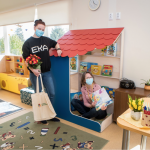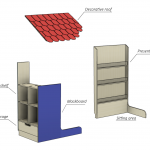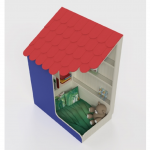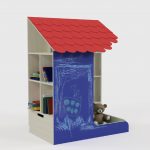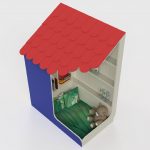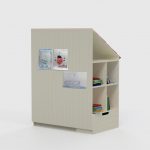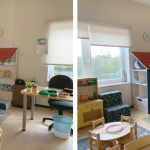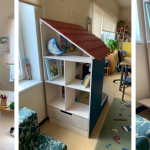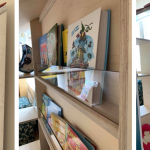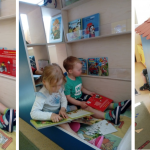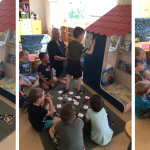Liisi Kippak
- Faculty of Design
- Industrial and Digital Product Design
- ba
- Playful Reading Area for Kindergarten
- Tutor(s): Merike Rehepapp
The general interest in reading has decreased and it is becoming increasingly difficult to attract children to books. It may happen that the child’s first contact with books and reading takes place in kindergarten because there are simply no books at home or no attention is paid to it.
Many kindergartens do not have a separate area for reading and looking at books, or the existing one is not attractive enough for children. Books seem boring to children and remain physically inaccessible.
The aim of this bachelor’s thesis is to increase the interest of kindergarteners in books and reading, making books more attractive and physically accessible to children. Also, playfully integrating them with various activities to encourage children to read books early, while increasing the general interest in reading.
The result of the thesis is to offer an idea in the form of a product – a reading house. The created solution is planned to the kindergarten play and study room, located next to the wall or in the middle of the room. The users are 3-6-year-old kindergarten children (preschoolers), both boys and girls.
The product resembles a house, being a familiar and safe looking place to the child, playfully inviting them to the books. This choice was made because children like caves, huts and playhouses, places to hide, and often build them themselves.
The reading house consists of two different types of shelves – classic and presenting. Both shelves can also be accessed from the sitting area. The sitting area is for up to three children at a time and is pleasantly furnished and comfortable by the kindergarten group itself.
The front of the product is painted with chalkboard paint and on the side it has a small cupboard for storing things. The back wall can be used to dry and display children’s paintings.
The product can be unassembled into three parts to make it easier to move between kindergarten rooms if necessary. Only module attachments are visible.
The product is mainly made of plywood. This option is a compromise based on the constraints set out in the terms of reference. The material is durable and stable, while being a warm material with a natural look. All edges and corners have been rounded.
Colors suitable for children’s furniture have been used as a covering material, changing the product not only visually but also providing good cleaning and disinfection properties. To achieve a natural look, the wood pattern is visible under the paint. Only two primary shades have been introduced as additional colors so as not to overshadow the colored front covers of the books.
As the national emergency eased, the product was taken for testing to the Kuressaare Ristiku kindergarten, which was also one of the observed kindergartens, which the author visited to collect additional information during the work process.
The general feedback was positive and teachers saw the value in the solution created, saying that using the reading house made the learning process more creative and increased children’s interest in learning. According to the teachers’ descriptions, the reading house is multifunctional and the only limitation is fantasy.
The added value of the product comes from its many possible uses, as it is not just about reading and browsing books. Thanks to the additional activities that can be done in the reading house, the house is always in use.
After the end of the test, the author gifted the reading house to the kindergarten so that the children could enjoy it on a daily basis. In the future, teachers plan to continue using the reading house in their teaching activities. During the testing, possible ideas for further product development also emerged. After the article appeared in a local newspaper, the director of another kindergarten in Kuressaare and the director of Tallinn Central Library announced their interest in the product.
